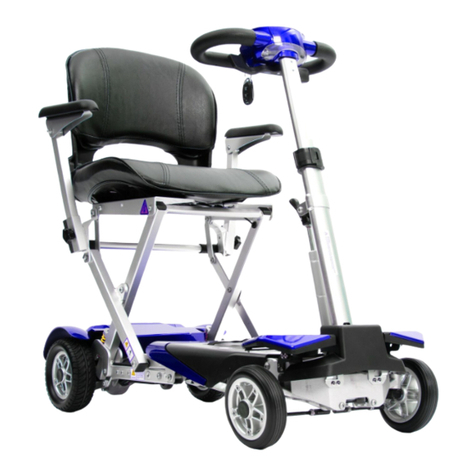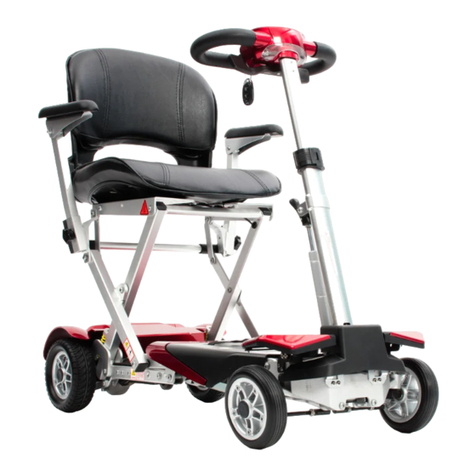
3
2. CONTACT INFORMATION
For assistance in setting up, using, maintaining your scooter, to report unexpected
operation or for any service, warranty, sales or customer service information regarding
this product, please contact Drive DeVilbiss Healthcare Ltd.
1. INTRODUCTION
Thank you for purchasing this AstroLite Scooter These instructions for use should
be read carefully and understood before operating the scooter. Improper use
or unfamiliarity with the scooter may result in harm, injury or trac accidents. A
maintenance schedule has also included at the back. Keep this manual with the scooter,
or in a safe place.
Contact Drive DeVilbiss Healthcare Ltd. or check our website for the latest version of
this document. Users with visual, reading or cognitive disabilities should seek advice
from a professional care provider for an appropriate format. If this is not viable, users
should contact Drive DeVilbiss Healthcare Ltd. If you have any questions concerning the
operation or maintenance of the scooter, contact Drive DeVilbiss Healthcare Ltd.
Any serious incident that has occurred in relation to the device should
be reported to the manufacturer and the MHRA or competent authority of your Member
State. Please quote the product serial code on all correspondence.
For Service & Support outside the United Kingdom, please contact the local distribution
company from where this equipment was purchased. Failure to do so may result in the
product warranty becoming void.
Wu´s Tech (Vietnam) Co., Ltd.
No. 31, VSIP II, Road 6, Thu Dau Mot City,
Binh Duong Province, Vietnam
Drive DeVilbiss Healthcare Ltd.
Sidhil Business Park, Holmfield, Halifax, West Yorkshire,
HX2 9TN, Great Britain
Y. Sung Handelsvertretung
Toulouser Allee 9, 40211 Duesseldorf, Germany
Drive DeVilbiss Sidhil Ltd.
4 Trench Road, Mallusk, Newtownabbey
BT36 4TY, Northern Ireland
UK Aplan Corporation Ltd.
47 Wandle Road, Croydon, Surrey, CR0 1DF, England, Great Britain































